A Russia-NATO War Would Look Nothing Like Ukraine
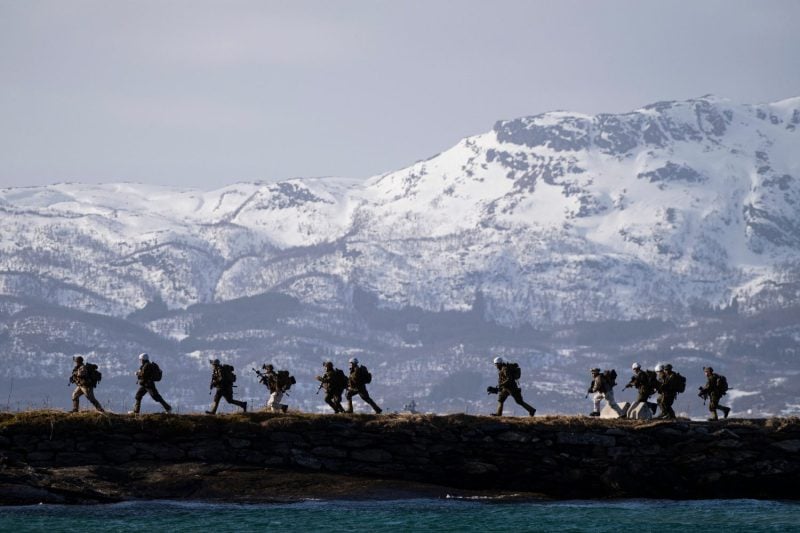
A Russia-NATO War Would Look Nothing Like Ukraine
Moscow will seek to avoid a full-on war and focus on breaking the bloc’s resolve.
U.S. Marines take part in the international military exercise Cold Response 22 near Sandstrand in northern Norway on March 21, 2022. Jonathan Nackstrand/AFP via Getty Images
Russia planned its February 2022 invasion of Ukraine as a decisive, three-day campaign that would take its troops into Kyiv and quickly topple the Ukrainian government. More than three years later, that scenario remains a Russian pipedream. Suffering horrific casualties and losses of equipment, Russian forces are bogged down along a static front line hundreds of miles from Kyiv. While Russia has made incremental tactical gains over the past year, there is absolutely no sign of a military breakthrough anytime soon.
Farther west, European NATO states are scrambling to rearm. Several NATO defense chiefs warn that the alliance must be ready to confront a Russian attack on one or more of the bloc’s members within three to seven years. More starkly, Danish officials have warned that Russia could launch some sort of attack within six months of the war in Ukraine slowing or ending.
Russia planned its February 2022 invasion of Ukraine as a decisive, three-day campaign that would take its troops into Kyiv and quickly topple the Ukrainian government. More than three years later, that scenario remains a Russian pipedream. Suffering horrific casualties and losses of equipment, Russian forces are bogged down along a static front line hundreds of miles from Kyiv. While Russia has made incremental tactical gains over the past year, there is absolutely no sign of a military breakthrough anytime soon.
Farther west, European NATO states are scrambling to rearm. Several NATO defense chiefs warn that the alliance must be ready to confront a Russian attack on one or more of the bloc’s members within three to seven years. More starkly, Danish officials have warned that Russia could launch some sort of attack within six months of the war in Ukraine slowing or ending.
These two images of Russia are difficult to reconcile: a Russia that is dismally failing to reach its ambitions in Ukraine and a Russia that poses an existential threat to NATO, especially the Eastern European states.
The key to this apparent paradox lies in understanding that a NATO-Russia war would likely be very different from Russia’s invasion of Ukraine. Russia’s primary goal in a war against NATO would not be to seize large territories—at least not initially—but to destroy the alliance as a political and military entity capable of opposing Russia. Doing so would not require defeating NATO’s forces in open battle and marching into Berlin.
Rather, it would entail destroying NATO’s unity and resolve, with the Kremlin betting that the alliance would fracture under pressure. Generating the forces for such a pressure tactic is likely manageable for Russia in the short term, particularly once fighting in Ukraine has slowed or ended. Russia therefore poses a severe and existential threat to NATO in a fundamentally different way from the type of war we see in Ukraine.
Contrary to Russia’s bellicose propaganda, Moscow’s political and military elites understand that Russia would likely lose a full-on conventional war with NATO, even without U.S. involvement. For Russia, avoiding a prolonged attritional conflict and securing a swift, favorable resolution is therefore essential.
A Russian attack on NATO would therefore not primarily aim to destroy the alliance’s overall capacity to wage war, although degrading its short-term military potential would likely be an early goal. The central effort would focus on undermining NATO’s resolve and willingness to resist. Russia will likely favor a short, high-intensity campaign designed to fracture NATO’s political cohesion. The aim would be to keep the confrontation localized, involving only one or a few NATO states at most, and to end it quickly.
A plausible scenario could begin with a limited incursion into NATO territory at a perceived weak point—for example, in one or more of the Baltic states. After the initial attack, Russia might declare that any attempt to retake the occupied area would trigger nuclear escalation—a strategy that military analysts call aggressive sanctuarization. To reinforce this, Russia could arm and disperse several missiles equipped with tactical nuclear warheads and declare readiness to launch at a moment’s notice. If NATO prepared a counterattack, Russia could escalate further by striking civilian infrastructure deep inside Europe with conventionally armed missiles, signaling that continued resistance only raises the costs. Should Russia conclude that a more drastic escalation would serve its interests, nuclear warning shots into the European rear cannot be ruled out.
This type of attack would be a high-stakes gamble. It would rely on the assumption that, as NATO’s resolve weakens under the strain of escalating conventional and nuclear threats, possible missile strikes in the European rear, and accompanying sabotage and other gray-zone operations, the alliance would de facto capitulate.
Russian decision-makers likely do not anticipate a uniform surrender across NATO. They would almost certainly expect strong resistance from some members, particularly those in Eastern Europe. Still, the Kremlin may believe that the United States and key Western European allies, when faced with real consequences on their soil, would falter and refrain from defending their partners. Any reluctance to defend an attacked NATO member would signal the effective collapse of the alliance—Russia’s primary objective and a precondition for asserting regional dominance.
Russia’s decision to attack one or more European NATO states would therefore hinge less on the balance of forces and more on the perceived balance of resolve. While Russian troops have repeatedly faltered in Ukraine, there is little doubt about Russia’s determination to overturn the post-Cold War order and reestablish a sphere of influence in Eastern Europe. Coupled with what Russia perceives as recurring Western risk aversion and low tolerance for pain, this creates a dangerous mix that could tempt Russian decision-makers to act sooner rather than later.
What would Russia need to carry out such a limited attack?
First, it would require a tip-of-the-spear force capable of breaching NATO’s border at a weak point, supported by sufficient follow-on forces to occupy a small but strategically relevant portion of NATO territory. Breaching fortified defenses has become more difficult in modern warfare, largely due to the large-scale proliferation of tactical drones, which inflict heavy losses even on small maneuver elements once they leave cover. However, the war in Ukraine also shows that these same technologies, when properly employed, can help overcome defenses. For example, Russian drone teams played a key role in breaching Ukrainian defensive positions in the Kursk region and reestablishing control. Together with Ukraine, Russia now fields some of the most capable drone pilots in the world—experienced, battle-hardened, and likely far superior to their NATO counterparts in an initial encounter.
Drones alone do not win wars, of course. Russia would also require traditional mobile forces to take and hold territory: well-trained infantry, armored vehicles, tanks, and support units. Recent intelligence reports suggest that Russia has managed to mobilized enough men not only to cover combat losses but to expand its forces. Similarly, Western officials note that Russia is producing more equipment and ammunition—including modern tanks (by Russian standards) and artillery shells—than it is sending to the front. Crucially, creating the kind of force that could succeed in a limited incursion against NATO would not require Russia to restore its full pre-2022 strength.
To create a coercive conundrum for NATO leaders, Russia would also need a credible precision nuclear force capable of threatening—and if necessary, conducting—nuclear strikes. In parallel, it would require deep reserves of conventional long-range strike weapons to threaten and carry out repeated salvos against European critical infrastructure.
In nuclear terms, Russia is already well positioned. At least as important as its estimated stockpile of about 2,000 nonstrategic warheads is the variety of delivery systems that can be nuclear-armed on short notice. On the conventional side, Russia is estimated to produce around 1,200 land-attack cruise missiles, 400 short- and medium-range ballistic missiles, and more than 6,000 long-range drones annually while working to scale up output. Although exact numbers are hard to verify, the relatively low rate of missile activity over the past winter suggests that Russia may already have acquired a significant stockpile. If the Ukraine war slows or ends, Russia would be well positioned to rapidly expand its missile reserves further.
How should NATO prepare?
One of the key variables determining the timing of a potential Russian attack is the ongoing war in Ukraine. As long as Russia must commit most, if not all, of its available resources to Ukraine, an attack on NATO territory remains unlikely—even if it cannot be entirely ruled out. As we have seen, Russia already appears to be mobilizing more than it is sending to Ukraine, and any further slowdown in the fighting will translate into growing Russian reserve arsenals for other scenarios. Only Ukraine can determine how long it will continue the fight and under what conditions it might consider a settlement with Russia. But as long as Ukraine chooses to resist, it is not only morally and legally right for European states to support it but also strategically sound. In addition, signaling commitment to Ukraine and a willingness to take calculated risks against Russia would also help shift the balance of resolve back in NATO’s favor.
At the same time, Europe must prepare for the kind of war Russia is likely planning—one that will differ significantly from the protracted conflict now unfolding in Ukraine. The best way to counter a short, high-intensity Russian campaign is to deny any incursion at the border. This requires a credible forward defense posture, which NATO still lacks. Enabling forward defense means moving more troops and equipment to the front line, especially as the United States shifts its focus elsewhere and may withdraw combat formations from Europe. As long as Europe does not shift its defense industries to a war footing and procures at a scale matching the threat, a window of vulnerability will stay open, particularly as Russia shows no signs of slowing down its war industry. Persistent denial of any Russian attack will require drones, missiles, tanks, mines, and supporting systems. Europe needs more of everything, and there is no time to lose.
European NATO states must also show the ability to respond effectively to Russian coercion, both nuclear and non-nuclear. Missile defense can help mitigate the impact of long-range strikes on European targets, but it will not be sufficient. To create deterrence, European states must similarly invest in and deploy a credible counterstrike capability, making clear that they are prepared to strike back immediately, including against Russian critical infrastructure. NATO must also signal unambiguously that while it does not seek nuclear escalation, it will not yield to nuclear threats or use—and back these words with capabilities. Given a weakening U.S. extended deterrence guarantee under U.S. President Donald Trump, European nuclear weapon states must take on a greater role by expanding and diversifying their nuclear arsenals and adapting their doctrines.
Russia has made abundantly clear that its revisionist ambitions do not end in Ukraine. It would be reckless not to prepare for war—precisely to deter it from happening in the first place. Equally misguided is assuming that such a war would resemble the war in Ukraine. If Moscow confronts NATO, it will exploit NATO’s weaknesses and play to its own strengths. A short-term, high-intensity scenario designed to fracture the alliance and remove European resistance as a relevant factor appears the most likely Russian approach. This scenario should be central to NATO’s planning as Europe rearms.
Fabian Hoffmann is a doctoral research fellow at the Oslo Nuclear Project at the University of Oslo and a non-resident fellow in trans-Atlantic defense and security at the Center for European Policy Analysis. X: @FRHoffmann1
More from Foreign Policy
-

Indian Air Force personnel stand in front of a Rafale fighter jet during a military aviation exhibition at the Yelahanka Air Force Station in Bengaluru. A Tale of Four Fighter Jets
The aircraft India and Pakistan use to strike each other tell a story of key geopolitical shifts.
-

A cardinal in a black robe with red sash with hands folded in front of him walks past a stage and steps. Conclave Sends Message With American Pope
Some cardinals had been agitating for U.S. leadership to counter Trump.
-

An illustration shows red tape lines crossing over and entrapping a semiconductor chip. Is It Too Late to Slow China’s AI Development?
The U.S. has been trying to keep its technological lead through export restrictions, but China is closing the gap.
-

A man watches a news program about Chinese military drills surrounding Taiwan, on a giant screen outside a shopping mall in Beijing on Oct. 14, 2024. The Pentagon Fixates on War Over Taiwan
While U.S. military leaders fret about China, Trump has dismissed the Asia-Pacific.


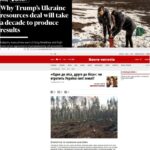

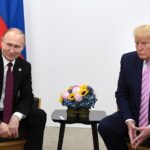



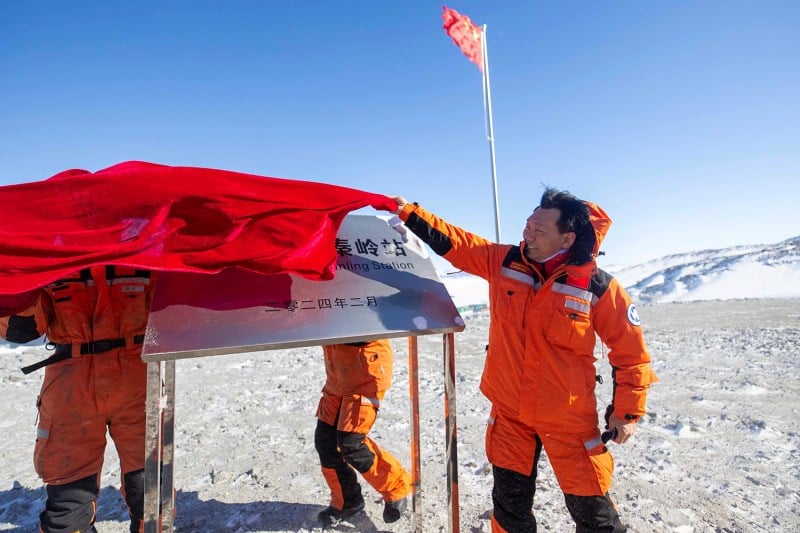
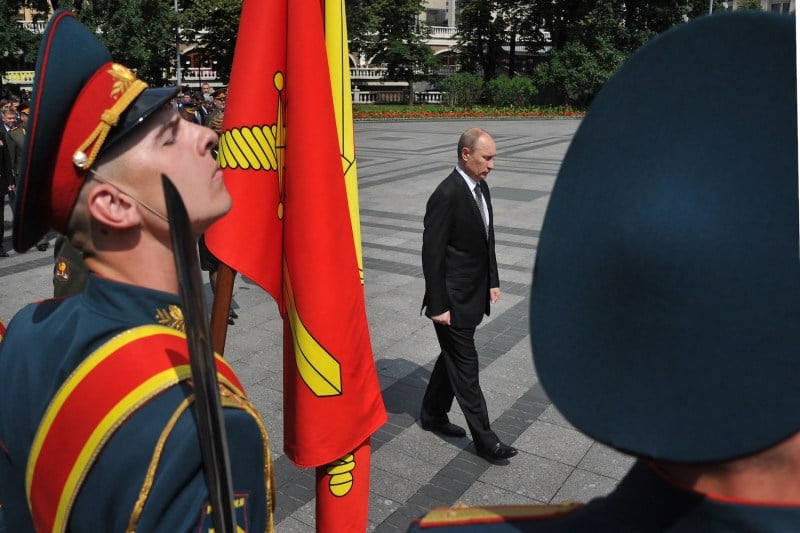
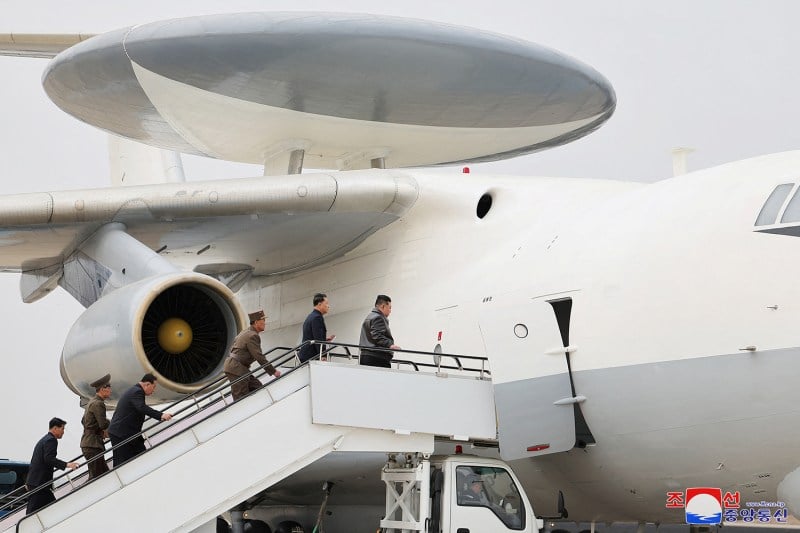

Join the Conversation
Commenting on this and other recent articles is just one benefit of a Foreign Policy subscription.
Already a subscriber?
.
Subscribe
Subscribe
View Comments
Join the Conversation
Join the conversation on this and other recent Foreign Policy articles when you subscribe now.
Subscribe
Subscribe
Not your account?
View Comments
Join the Conversation
Please follow our comment guidelines, stay on topic, and be civil, courteous, and respectful of others’ beliefs.
Change your username |
Log out
Change your username:
CANCEL
Confirm your username to get started.
The default username below has been generated using the first name and last initial on your FP subscriber account. Usernames may be updated at any time and must not contain inappropriate or offensive language.